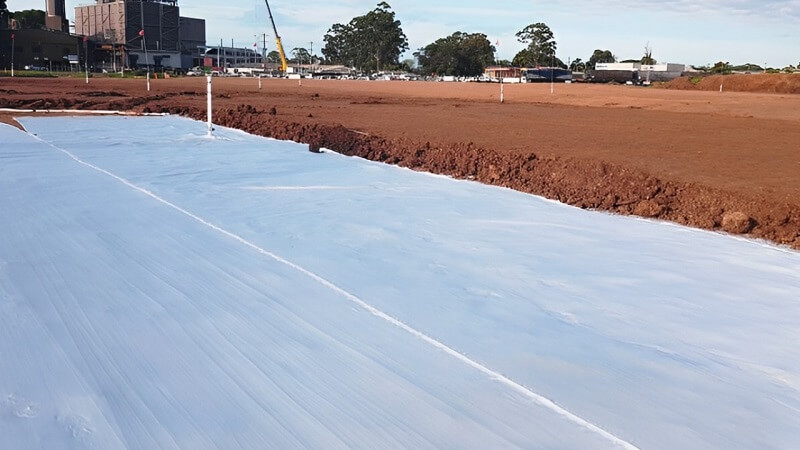Landscaping is an art form that combines the beauty of nature with the structural elegance of design. Essential to this blend is not just the flora and materials visible to the eye, but also the foundational elements that ensure longevity and functionality. One such element, often unsung yet vitally important, is geofabric Australia. In a country where extremes of weather can test the endurance of landscaped environments, the role of geofabric is particularly crucial.
What is Geofabric?
Geofabric, also known as geotextile, is a permeable fabric which, when used in association with soil, has the ability to separate, filter, reinforce, protect, or drain. It comes in a variety of forms—woven, non-woven, or knitted—and is made from polyester or polypropylene. Its usage spans numerous applications within the civil engineering and landscaping sectors.
The Significance of Geofabric in Landscaping
In the realm of landscaping, geofabric plays a protective and sustaining role. By providing a separation layer between different substrates, it prevents the mixing of distinct soil types or gravel with the earth beneath. This is particularly important in the construction of pathways, retaining walls, and garden beds, where the integrity of the materials used is essential for long-term durability.
Drainage Solutions
Geofabric’s ability to act as a filter is essential in the management of water within a landscape. It allows water to pass while preventing soil erosion, a critical function in reducing the risk of pooling water and promoting plant health. Proper drainage solutions, facilitated by geofabric, are integral to maintaining the structural and aesthetic integrity of any landscaped area.
Reinforcement
When it comes to reinforcing landscaped areas, geofabric provides stability to layers of gravel or soil, which is especially important on slopes and in areas susceptible to erosion. By holding materials in place, geofabric can extend the life of a landscaping project and reduce maintenance needs significantly.
Applications of Geofabric in Landscape Projects
Landscape design is all about creating functional, sustainable, and visually appealing spaces. Geofabric is a hidden ally in this pursuit, providing support in a variety of ways. From reinforcing grassed parking areas to under laying decorative garden pathways, its uses are as diverse as they are essential.
Retaining Wall Construction
Retaining walls are often integrated into landscape designs to manage soil movement and provide structure. Geofabric can be used behind retaining walls to ensure stability and adequate drainage, preventing water build-up which can lead to wall collapse.
Erosion Control
In regions of Australia where heavy rainfall or winds are common, the control of erosion is a significant concern. Geofabric placement in these scenarios can help stabilize soil and prevent loss of land to the elements.
Weed Suppression
Combatting weeds is a constant struggle in gardening and landscape maintenance. Geofabric acts as a barrier, not only for soil separation but also to suppress weed growth, thereby minimising the need for chemical treatments and labor-intensive weeding.
Quality and Selection of Geofabric
Selecting the right type of geofabric for specific applications is just as important as deciding to use it in the first place. Factors such as tensile strength, permeability, and life expectancy should be taken into account, along with the specific nature of the landscaping project. Quality materials make a difference, and sourcing geofabric from reputable Australian suppliers ensures that the products are suited to the unique Australian climate and environment.
Care and Installation
The benefits of geofabric can be fully realised only with proper installation. Care must be taken to lay the fabric flat and overlap it correctly to avoid gaps or wrinkling, which can compromise its functions. Anchoring the fabric correctly is also crucial, as it prevents movement and maintains the integrity of the landscaping structure.
The Environmental Aspect
As we become increasingly conscious of the environmental impact of our choices, it’s worth noting that geofabric can contribute positively to the ecological balance. Its use in controlling erosion and sediment preserves natural waterways and supports native flora and fauna, providing sustainability in the design and maintenance of landscapes.
Transforming Landscapes Across Australia
From private gardens to public parks, geofabric is a transformative element in landscaping across Australia. It enables the creation of enduring and resilient outdoor spaces that thrive in diverse conditions.
Conclusion
In conclusion, geofabric is an integral part of modern landscaping that offers a myriad of benefits. Its ability to separate, protect, and reinforce makes it indispensable for various applications within the landscaping industry. Those seeking to enhance their outdoor environments in Australia will find that incorporating geofabric into their landscapes is a wise and forward-thinking choice. By consulting with knowledgeable suppliers and ensuring correct installation, landscape projects can be elevated, giving them the structural integrity needed to withstand the test of time and climate.
Ultimately, geofabric is not just a material—it’s a landscaping essential that underpins the transformation and longevity of our cherished outdoor spaces.
